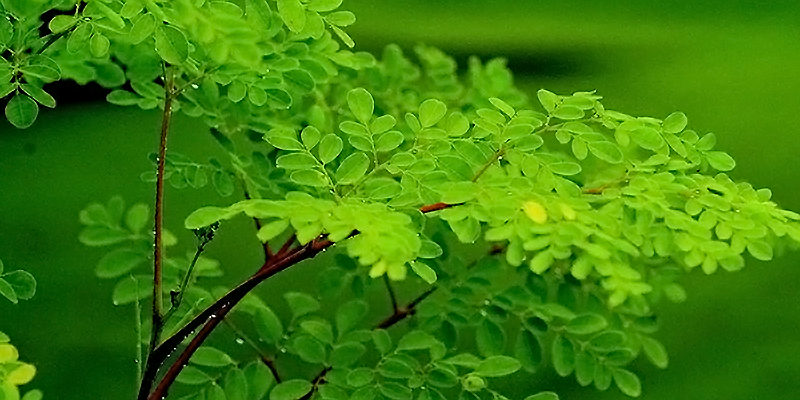Botanical Name (s): Moringa Adans species: Moringa oleifera Lam. Popular Name (s): horseradish tree, drumstick tree, Sahijan.
Parts used: roots, seeds and leaves
Habitat: Found through India
Description: l Moringa tree grows mainly in semi-arid, tropical and sub-tropical areas. While the best type of soil for this tree is dry and sandy, also can tolerate poor soil such as that found in coastal areas. The tree is native to the Himalayas in northwest India. Moringa is grown extensively in areas such as Africa, Central and South America, Sri Lanka, India, Mexico, Malaysia and the Philippines. It is believed that one of the shafts is most useful in the world. Its leaves are highly nutritious, being a significant source of beta-carotene, vitamin C, protein, iron and potassium. The leaves are used as cooking and spinach. The tree has an average height that extends to 15-20 feet. The fruits are 6.8 inch long brown in color and have six visible veins. The leaves are 1-2 feet long and are in pairs 6 to 9, with a width of 1/4 inch. Moringa oleifera seeds are triangular and astringent in taste
Uses and Benefits of Moringa
- The bark, sap, roots, leaves, seeds, and flowers of moringa oil are used in traditional medicine in several countries.
- The thickened root of the plant has been used as horseradish in the past. This practice is discouraged, because the root contains alkaloids, which can be fatal if swallowed.
- The leaves of the plant serves culinary purposes. It is used in salads and as a condiment in pickles.
- Moringa leaves can also be used for washing walls and utensils.
- The bark of the plant carrying a thick fiber can also be used for the purpose of tanning.
- Because of its high nutritional value, Moringa has been used to reduce malnutrition, especially among children and lactating mothers, in tropical developing countries. The leaves of the plant are consumed fresh and stored in dry powder form for months.
- Medicinally, the herb has been used both to treat and prevent certain medical conditions. However, there is little scientific evidence to support these claims. In India, it is used to make a variety of Ayurvedic medicines.
- Are considered to possess antibiotic properties, according to some scientific investigations.
- The plant has also been used as an antibiotic for the treatment of venomous bites and other conditions. Also used to cure rheumatism.
- Moringa seeds are used for oil, which can be used to cook a variety of dishes.
